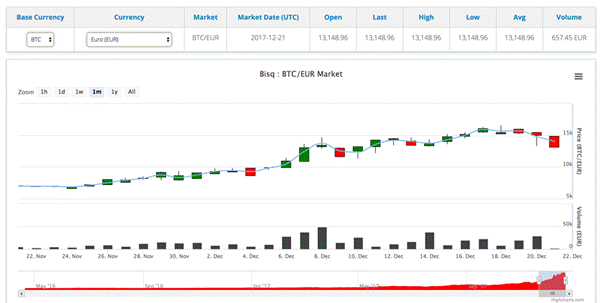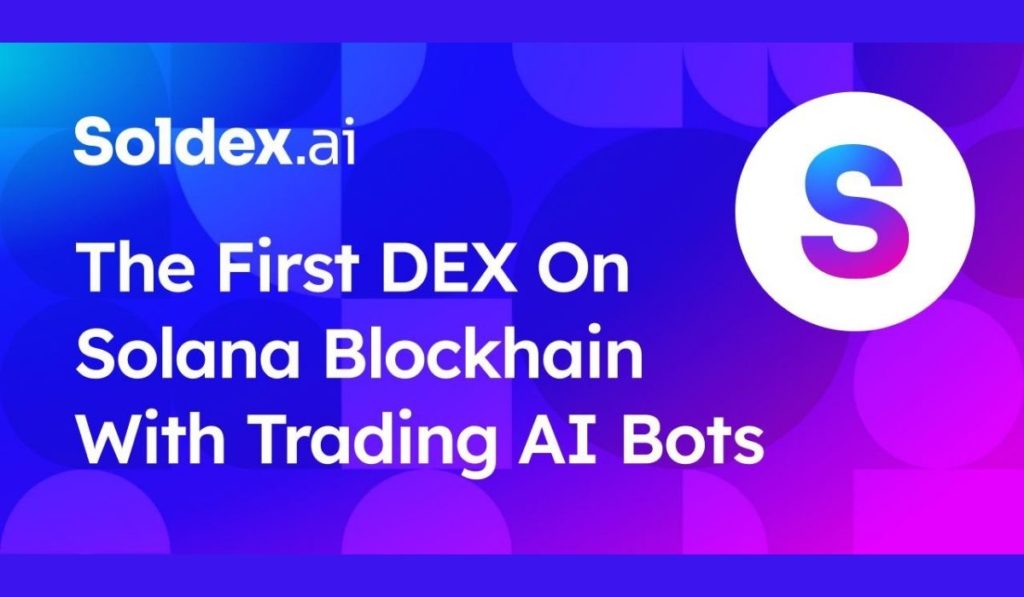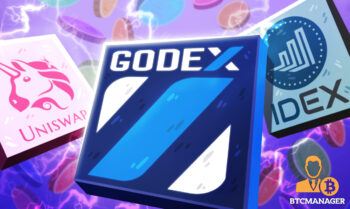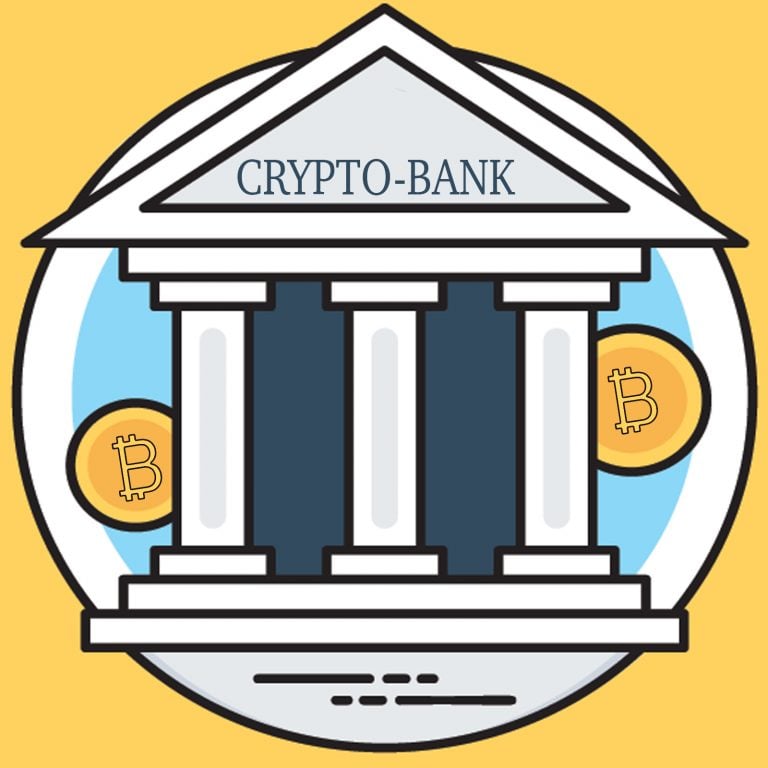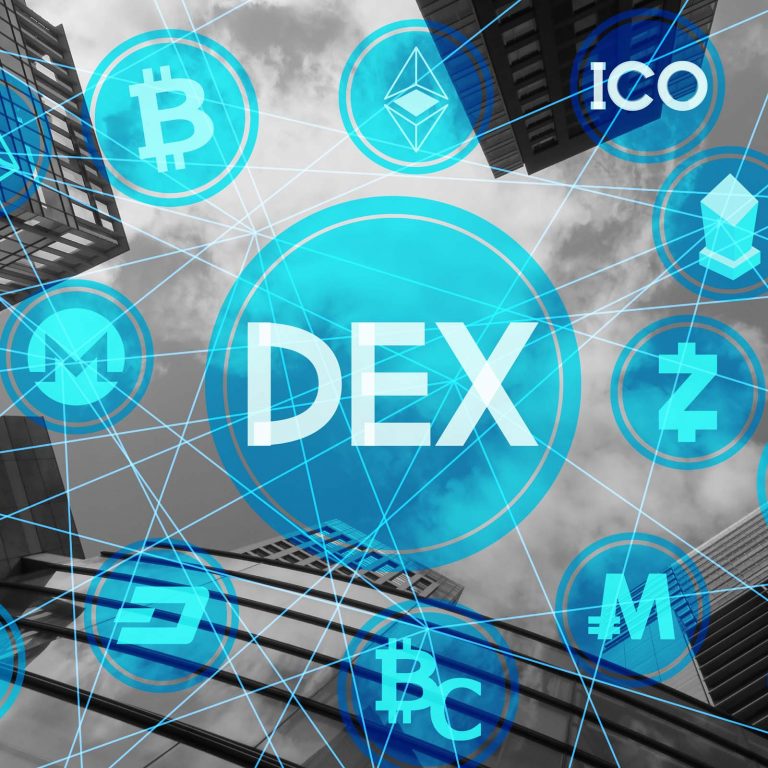2018-12-1 15:15 |
This definitive primer on decentralized exchanges explores current models, challenges and future potential of decentralized exchanges (DEX)
From the CMC editorial desk: With all the hope we have for decentralized exchanges, what does the current DEX landscape look like? We turned to DDEX for their take on all the basics you need to know about the core principles of DEXes!
Current Bear Market Cryptocurrency ExchangesIt’s September 2018, and while the current cryptocurrency market may look like a grizzly exhibit at the zoo (bears everywhere!) there are still billions of dollars (USD) worth of cryptocurrency traded daily on exchanges. When the market is bearish, exchange trading volume dips as well, but it never fades completely. Even as the market enters a period of relative calm, traders still buy and sell their digital assets at a rapid pace every day. A quick glance at https://coinmarketcap.com/rankings/exchanges/ shows the current exchanges dominating markets in cryptocurrency trading:
It’s somewhat ironic that these top cryptocurrency exchanges are almost entirely centralized, while trading currencies that are mostly inherently built around the premise of decentralization. Today, almost 99% of daily cryptocurrency trading volume still goes through centralized exchanges.
A common sentiment among influencers and enthusiasts in blockchain is that “decentralized exchanges are the future”. However, this clearly is not the present state that we know, so some things must be preventing decentralized exchanges from breaking through to greater trading significance right now.
Through operating one of the larger decentralized exchanges we have a unique understanding of current cryptoeconomics. By analyzing the current benefits and challenges of exchange economics and future projections for the cryptocurrency landscape, we hope to provide a deeper perspective and understanding of the cryptoeconomics of decentralized exchanges.
Understanding Exchange Trends: Where We Are NowThe current top 3 decentralized exchanges by trading volume, Bancor, IDEX, and DDEX, all combine to less than a percent of the transaction volume of the current top centralized exchange alone – Binance. There are several key differences in the structures of centralized and decentralized exchanges that are important to understand when assessing the economy.
The popular token pairings on centralized and decentralized exchanges are quite different. DEX’s have cornered a more niche market, in so-called “long-tail” tokens – tokens that are not quite as popular yet. It is common for DEX’s to list tokens much more quickly than their centralized counterparts; post-ICO tokens often dominate the volume on decentralized exchanges.
And even then, top trading pairs are generally vary widely among decentralized exchanges. For newer tokens, there is often not enough trading interest to support multiple platforms. It’s much more common for one decentralized exchange to take more than 90% of daily trading volume for a given trading pair when it comes to a brand new token. This may explain why the trading volume for top DEX’s is relatively volatile; the 24-hour trading volume for DEX’s often fluctuates by more than 50% from day to day.
Centralized exchanges dominate overall cryptocurrency trading volume by an overwhelming margin, and trading volume is considerably more consistent (although still insanely volatile when compared to traditional stock systems). Perhaps oddly, there is no “one exchange to rule them all” in cryptocurrency trading. As of today, the largest single exchange only accounts for less than 25% of total trading volume. The fifth largest centralized exchange still has a significant share of the market, with more than 25% of trading volume of the #1 exchange.
Compare this with traditional e-commerce, where the top 3 companies account for >90% of total annual revenue. The cryptocurrency trading volume, by comparison, is actually quite spread out among the top centralized exchanges.
So at first glance this might not make any sense: Why are decentralized trading pairs so different, and why doesn’t one exchange take off as the dominant player in this space? This distribution of trading volume is caused by technology and regulations that heavily shape the cryptoeconomic landscape.
Technology RestrictionsIf you dig a little deeper into exchange volume on CoinMarketCap, you can break down specific trading pair volume at each exchange: https://coinmarketcap.com/exchanges/volume/24-hour/ . Currently, the top three exchanges all share the same #1 trading pair: BTC/USDT. (If you are slightly newer to crypto, BTC is Bitcoin and USDT is a stable digital currency that is designed to always be worth 1.00 USD). So, in a sense, these exchanges are all trading bitcoin for pseudo-USD. And their next most popular trading pairs are other tokens, such as Ethereum, EOS and more, paired with USDT.
Note that for both legal and functional reasons many exchanges avoid direct “crypto-to-fiat” trades, so users trade using USDT instead of USD.
Currently, almost all decentralized exchanges trade only Ethereum and Ethereum-based tokens (eg. ZRX/ETH, BAT/ETH, etc.) – neither of which are the same trading pairs that we see dominating on centralized exchanges. This alone is a huge reason as to why DEX’s have not seen much adoption currently: The most popular trading pairs on centralized exchanges are not even an option in a decentralized environment right now. Both the fiat (government currency) and BTC are missing.
If you’re asking yourself “Why can’t DEX’s do this yet?”, the main reason is that most decentralized exchanges today are built using Ethereum Smart Contracts to facilitate trades. Ethereum Smart contracts, by nature, run on the Ethereum blockchain. Therefore, transacting tokens on other blockchains (like BTC) necessitates some “cross-chain” solution, requiring more depth than a simple smart contract. While some projects are working on this, as of now, there still isn’t a highly functional solution that provides both a reasonably feasible trading environment and secure token transfers. Centralized exchanges can do this without a problem because trading on centralized exchanges does not actually involve any movement of cryptocurrency. Digital assets on centralized exchanges are only moved when you WITHDRAW from the exchange, not on every trade.
There’s more to it than just the inability to trade certain types of crypto on DEX’s though. If you have ever used a decentralized exchange before, you were likely confronted with a wealth of complex terminology and a completely new trading flow – things like compatible digital wallets, wrapped Ethereum and token allowance permissions, etc. The technology is new still. Much like dial up internet back in the early 90’s, the process still needs some serious optimization and refinement.
Meanwhile, the trading process on centralized exchanges is an existing and known process (though perhaps not an easy one either). The biggest usability challenge with centralized exchanges is often just getting an account set up.
Cryptocurrency Regulations, KYC, and PrivacyGetting an account on centralized cryptocurrency exchanges can be challenging, especially if you live in a highly regulated area. As a US user, for example, I legally cannot create accounts with 2 of the top 4 exchanges. The account verification process on these exchanges can also take weeks, and typically requires multiple forms of identification. This is a fascinating area that will likely evolve greatly in the next several years. There are both pros and cons to the KYC (know your customer) policies and regulations these exchanges abide to.
Overall, cryptocurrency regulation is still a bit of a legal grey area – especially when it comes to decentralized exchanges. There are massive convenience advantages to not requiring a lengthy account verification process, but legally it can be tricky for government entities to fully support. There is no “gold standard” for global cryptocurrency exchange KYC requirements. It’s vague and varies by country.
These differences in policies that vary by country create an even greater divide in the target audiences for centralized exchanges. This divide results in a geographical and resource diversification of top cryptocurrency exchanges, even when it doesn’t make sense. Generally, traders are all looking for the same thing regardless of where they come from: They want to buy/sell a certain token at the best possible price they can get. More active traders in a given market typically results in lower spreads (better prices) and greater depth. Hence, it would make sense that one exchange would be noted as the “most used” exchange for a given market and would start to take over, but it doesn’t really play out that way. A large part of why this doesn’t happen is because of this inherent separation of target audiences, which is in part due to which government regulations these exchanges choose to adhere to.
There’s another part here that I won’t dive into too much, that plays a factor in this as well: Market makers. Mass armies of automated price bots for a given market yields rapid market fluctuations, so playing multiple exchanges at the same time provides some additional benefit here to experienced algorithmic traders. There are arbitrage opportunities which become especially relevant in imperfect markets. It’s extremely difficult to quantify the impact of this though, so I am skipping over them for the sake of simplicity and brevity.
Decentralized exchanges, by contrast, tend to not require any account creation or KYC process. There are some that do, but the majority of the top ones do not require this. This is a massive benefit for users who like to maintain some semblance of anonymity and privacy, and can also just be extremely convenient. There is simply less of a barrier to entry. However, it also blurs the lines for the DEX in terms of targeting their users, and regulatory compliance. It seems like this is a huge win overall for DEX’s, but really most of the other DEX operators I’ve talked to have been extremely cautious, as regulations are still so unclear.
The Different Types of Decentralized ExchangesTo make matters more complicated, there are actually several different models that decentralized exchanges are currently using. Some of these models have varying degrees of actual decentralization, despite being called decentralized exchanges. The differences in early architecture of decentralization only increases the educational gap that users currently face when approaching DEX’s for the first time. In time it’s likely that one or two models (probably drastically different than what we see below) will dominate the landscape and this will become less of an issue, but for now it’s a challenge.
There are pros and cons to each of the current models. Let’s break down and explore each model here because it provides an interesting look into the different challenges decentralized exchanges currently face. There are trade-offs between being “more decentralized” and “trading simplicity”. Additionally, there are multiple order types that also carry some innate trade-off of complexity vs. functionality. For those unfamiliar in this realm, it can be quite overwhelming. Here, we will only discuss DEX models that are relatively popular currently, avoiding some that are in development and still not widely used.
Deposit/Withdraw ModelsThese models (adopted by Etherdelta, IDEX) play on the familiar centralized exchange concept of depositing and withdrawing, while still facilitating mostly decentralized trades. Rather than depositing your digital assets into an exchange, you are depositing them into a smart contract. The smart contract holds on to your funds and allows you to trade them within their platform. When you’re done trading, you can withdraw your funds from their smart contract.
This model has the obvious con of having a single obvious point of custodianship (the smart contracts). One of the IDEX contracts, for example, currently holds over $12 million USD worth of digital assets. However, as long as there are no bugs within that contract, funds should theoretically be safe.
It can also be somewhat inconvenient though – if you want to quickly take advantage of a deal on another exchange you have to withdraw your digital assets first before trading. Similarly, if you see a great deal on a deposit/withdraw exchange, you have to wait until your deposit clears to take the trade.
The main pro is that the process is pretty straightforward and familiar, and falls in the middle of complexity for the three models discussed here. You deposit, trade, and withdraw. Not too hard to understand! Now, you still have to deal with weird stuff like gas prices, network traffic, etc., but that exists for all forms of DEX’s currently.
0x RelayersThere are actually multiple forms of 0x relayers, but for the sake of brevity let’s meld them together in the same category (adopted by DDEX, Radar Relay, Paradex, etc.). These decentralized exchanges are referred to as relayers, as they take orders from multiple parties and “relay” them to a 0x smart contract to handle the actual transfer of funds. These models do not require any deposit or withdraw, and allow users to maintain full custodianship of their funds throughout trading.
The main con with 0x relayers lies in its complexities. ETH itself cannot be traded “decentrally” (to make a long story short, the code of ETH does not have the functions required to do so securely). So, you actually don’t trade ETH on 0x relayers, you typically trade for WETH (or wrapped ethereum). The process is actually similar to depositing or withdrawing: you have to wrap ETH to trade and then unwrap WETH to revert back to ETH if you wish to do something else with it. Have I lost you yet?
But wait, there’s more! In addition to this, users also have to set special permissions for each token type they want to trade in order for the 0x smart contract to execute trades on their behalf. All of these transactions, wrapping, unwrapping, and token allowances all require transactions on the blockchain. Understandably, this can be extremely overwhelming for new users.
There are lots of pros to this method however, despite it being the most complex structure. It’s arguably much more of a decentralized process than the deposit/withdraw model – there is no one wallet or contract holding large amounts of funds. Each user holds onto their own digital assets throughout the entire process, until a transfer is actually made. Even if a 0x relayer goes down, you can still easily unwrap your WETH back to ETH using a variety of other platforms. There are also fewer steps in the process altogether: Once a token has permissions set for trading, you never have to deposit/withdraw it.
It’s also much more natural to trade using alternate base pairs – stablecoins like DAI for example. These pairs don’t need to be wrapped, so a large portion of the complications are completely removed in these circumstances.
Lastly, there is also liquidity sharing potential between these relayers, so they could team up to create more competitive order books (thinner spreads, greater depth, etc.). The trading permissions are shared as well, and the WETH can be used on all 0x relayers.
Simplified DEX’sThere are a variety of different order types you can perform on exchanges. The simplest type of order is called a market order, which abstracts order books completely away from users. Market orders are used by simplified DEX’s (Bancor, Kyber) and are much more restrictive in the way that a user can specify an order, but the process is generally way easier to understand.
The pros are simplicity and convenience, which is huge. The cons are in order flexibility, and the fact that you are often given a price range rather than a perfectly exact price.
Price discovery is a major challenge for these models. In other exchange models, the price is all up to the traders, but this changes a bit with these simplified models. Bancor’s model, for example, is completely algorithmic. Typically, price discovery depends on market makers, but Bancor’s model abstracts that into simple algorithmic trading. This results in a simplified process for the project and user, but opens up opportunities for potential arbitrage.
Security: The Obvious Decentralized BenefitThe most commonly discussed benefit of decentralized exchanges is security. It’s not surprising when you consider the massive sums that have been lost on centralized exchanges:
Source: https://www.reuters.com/investigates/special-report/bitcoin-exchanges-risks/
With hundreds of millions of dollars (USD) worth of cryptocurrency lost over numerous hacks, it’s clear that centralized systems can be quite vulnerable to security breaches. Yet, despite the inherent risks, it’s still a system that people are comfortable using and has some usability benefits (as discussed above) that are currently outweighing the security and convenience benefits provided by decentralized exchanges.
The primary security benefit lies in the custodianship of tokens. To trade on a centralized exchange you MUST let them take full custodianship of your tokens. You’re trusting them not to lose them, or do anything sketchy with them, or freeze your account. On a decentralized system with current technology, there is the potential for a trade to occur without ever having to deposit your tokens or currency into any singular third party target, just not for all trading pairs.
In addition, there are some additional security issues beyond just custodianship of assets too, such as custodianship of trading permissions that are not covered here.
All else being equal (if you could trade all tokens on a decentralized exchange), would security alone be enough to drive users towards decentralized exchanges? It’s difficult to say, but many of the larger centralized exchanges seem to be preparing for this already. Recently Coinbase acquired a 0x relayer (Paradex) and Binance revealed an alpha demo of their decentralized exchange built on Binance chain.
SummaryAs the bear market presses on ever further, the trading volume for both centralized and decentralized exchanges remains somewhat diminished. The overall structure of the ecosystem remains unchanged though. Centralized exchanges are still controlling an overwhelming portion of daily trading volume, largely due to the significant technical and user experience barriers still separating centralized and decentralized exchanges.
As technology improves, decentralized exchange user interfaces will continue to evolve. Odd DEX complexities will be abstracted away from users, trading pair options will grow with cross-chain solutions, and the differences between centralized and decentralized exchanges will become less and less apparent. The potential to share liquidity among decentralized exchanges could play a role into this as well, providing stronger order books through aggregated trading API’s from multiple exchanges.
It may seem far away, but security and convenience can be pretty compelling selling points. Hopefully the bears start their hibernation soon and we can enjoy the ride!
About DDEX:DDEX is the first decentralized exchange built on Hydro Protocol technology, offering instant, real-time order matching with secure on-chain settlement. Running as a hybrid model decentralized relayer for Ethereum and ERC-20 tokens, DDEX utilizes both the hydro protocol and the 0x protocol to facilitate a safe and smooth decentralized exchange experience.
About Hydro Protocol:Hydro Protocol is a network layer protocol for high performance decentralized exchanges and marketplaces with built-in incentives for coordination. The protocol is underpinned by Ethereum and utilizes the 0x Protocol for settlement, and empowers anyone to easily create a high-performance decentralized exchange (DEX) and become a part of the ever growing tokenized revolution. It enables these DEXs to share pools of token liquidity and provides stimulus mechanisms to help this liquidity flourish to the benefit of all network participants.
With the security of wallet-to-wallet trading and none of the common downsides, projects built on the Hydro Protocol make up a global network of token marketplaces that are fast, easy to develop and use and have no risk of trade collisions, front-running and other common types of trade griefing. Recently, Hydro Protocol released their Hydro Swap alpha to further enhance the decentralized potential of cryptoeconomics.
The post Decentralized Exchanges 101: All you need to know appeared first on CoinMarketCap.
Similar to Notcoin - Blum - Airdrops In 2024
Decentralized Machine Learning (DML) íà Currencies.ru
|
|


